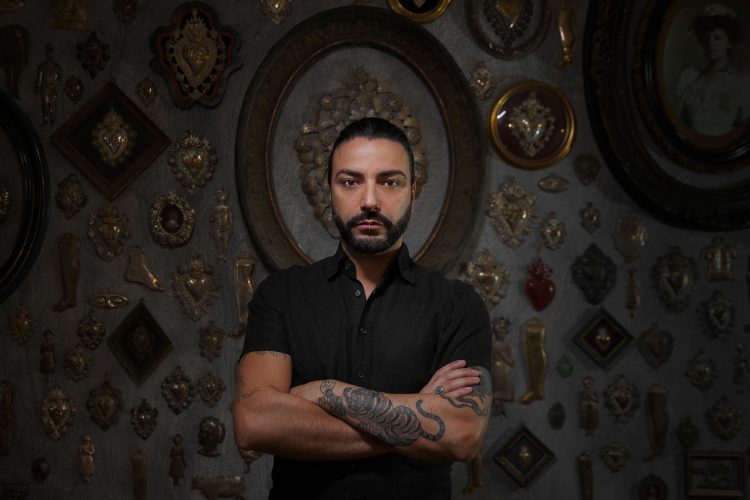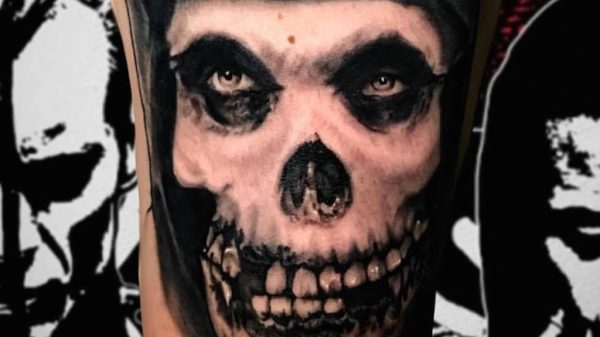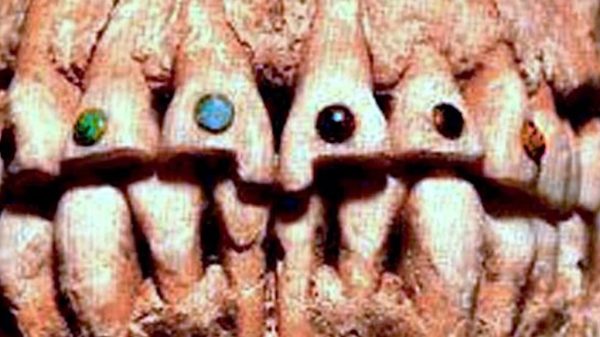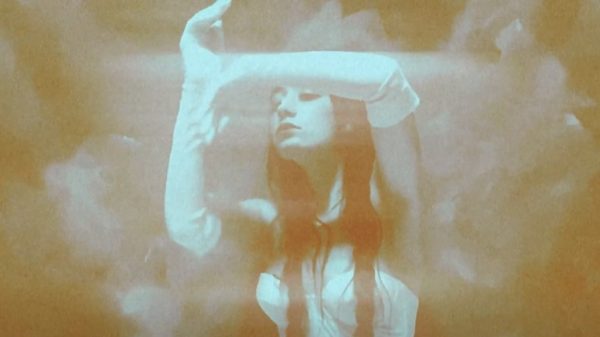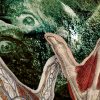“I’m not jealous of my secrets. I’m very open. I don’t take part in many tattoo conventions, but recently we did one in Milan and we’ve been filming everything with plenty of close-ups on the needles. And it all was displayed live on a screen, so that people could see it and become intrigued with what we do. You see, I’m not the kind of tattooist who’s always showing off, or on the ball because others may copy his work. After all, I spent thirteen years of my life working in construction sites, painting walls and having lunch with bricklayers, electricians and plumbers. I’m very down-to-earth.”
Our conversation with Marco C. Matarese has begun just a few minutes ago, but the kind of person we’re talking to is already clear. He really seems the kind of guy you would blindly trust if you had to let him make an irreversible modification to your skin.
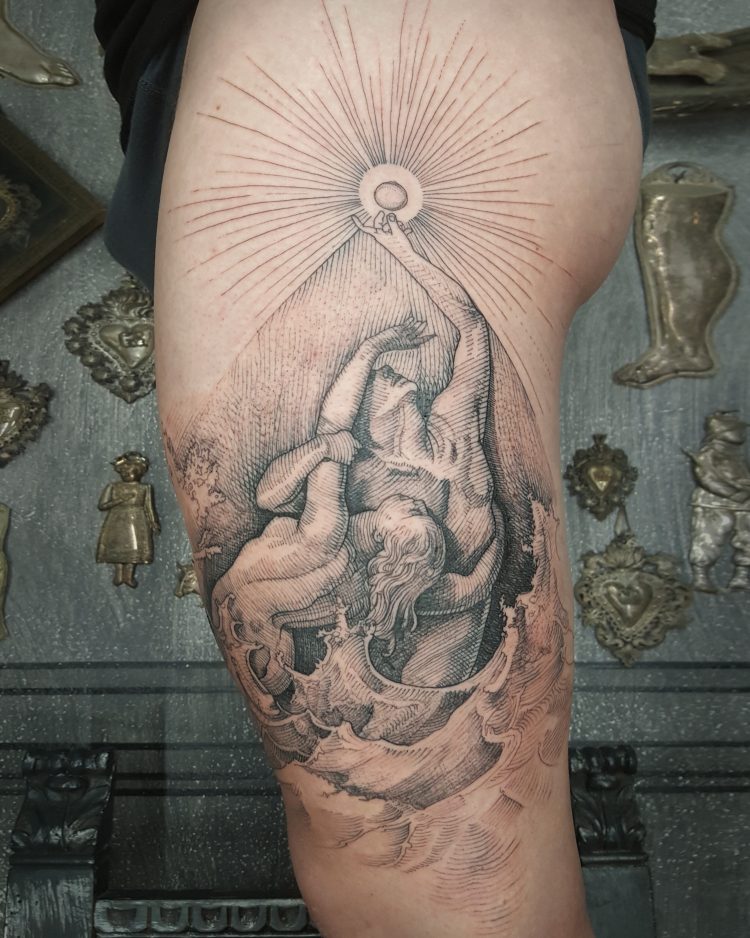
But it’s surely not just human warmth that made Marco Matarese one of the biggest sensations in the Italian tattoo scene. A former interior decorator, Matarese started his Pvro Tattoo Studio in Milan less than four years ago and his waiting list is already months-long. Thus he’s sort of a newcomer in this profession, having started tattooing at almost 40, that people come literally from all over the globe to have his spectacular etching-inspired works impressed upon their body.
“I had just opened my studio and I immediately got a lot of clients,” he tells me. “Which surely was good, but it was also very stressful from an emotional point of view. I had been tattooing for six months and I already had people coming from abroad to go under my needles. It was back then that I discovered there’s a community of tattoo collectors who’re ready to pack their suitcases in order to have a piece from an artist they like. I recall when I got a request from an Australian guy. I still remember his name.”
Actually, Matarese’s unique style combines artistry, poetry and a pernickety technique in a way that is hard to find in the wide world of tattoo. And his adaptation of the ancient tradition of etching on human skin is enhanced by a very personal, somehow romantic artistic touch, that we tried to explore in this chat.
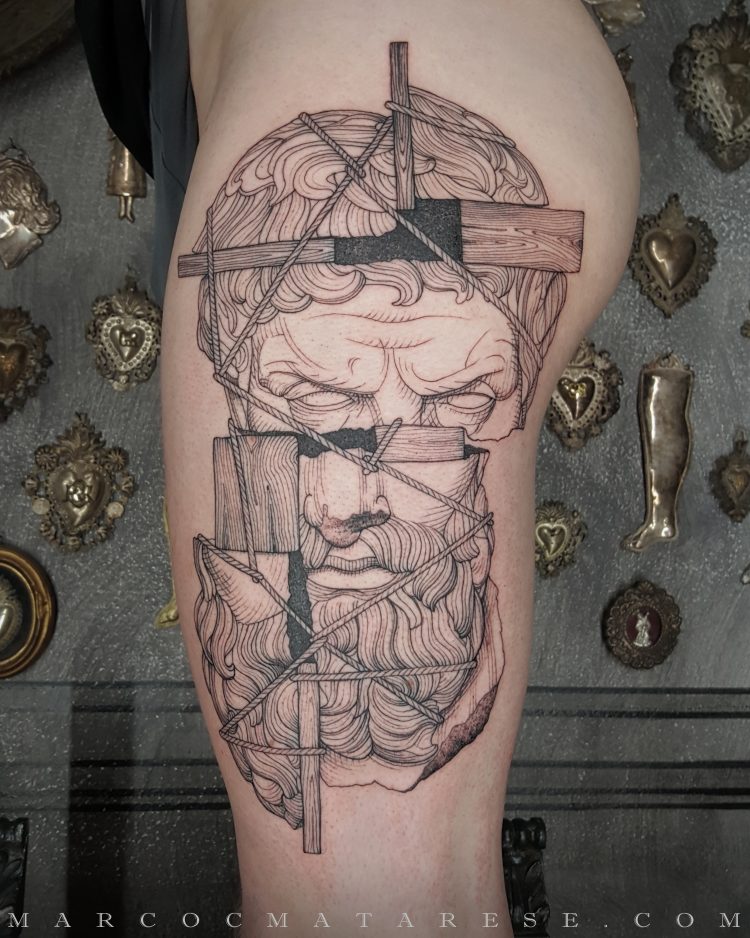
Why does etching intrigue you so much?
I first got in touch with etching when I was an art student at the Academy of Brera, in Milan. I was pretty much a paranoid and decadent kind of guy back then [laughs]. I remember that I used to consider etching an old fashioned subject. But at the same time, I enjoyed the physical side of this technique – scratching metal, carving wax, soaking the paper in acid and so on. This ‘handcrafted’ approach is what I really like to bring into the tattoo art. Also concerning my sources of inspiration, I like very much etchings from XVII and XVIII century: I love the pathos of that era.
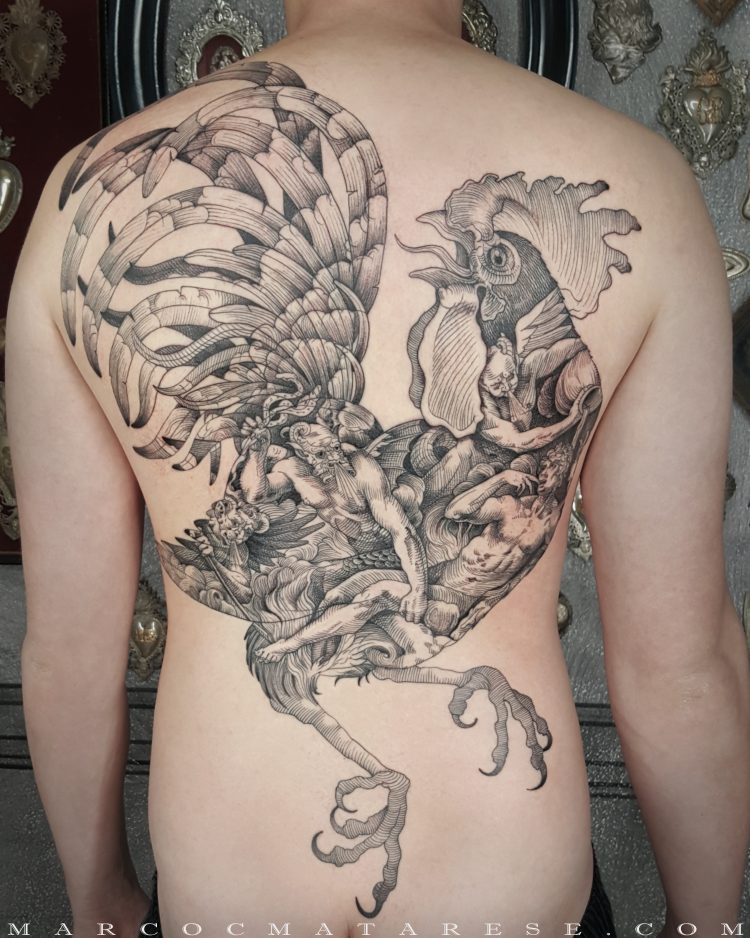
It looks like it requires a lot of skill to reproduce etching on human skin. I read in some previous interviews that you only draw very basic stencils and then go freehand: that’s quite impressive.
At the beginning, I used to draw very detailed stencils. Drawing on people’s skin, when you’ve always worked on paper – or walls in my case – can become kind of an extreme sport under an emotional point of view. You know, a person’s going to wear your work forever… So I felt that I needed as much help as possible. But now I only prepare a sketch with the primary lines and maybe some of the secondary lines, and then I go freehand. Sketching out an etching-style figure on a flat piece of paper rather than on someone’s thigh is extremely different.
You have some very personal poetics, which stands out clearly in all of your tattoos – though they’re very different one from each other. Do clients leave you free to express yourself or do they normally come to Pvro Tattoo Studio with precise requests?
I’m happy that my clients leave me more and more free to express myself with the passing of time. I like to do custom-made tattoos, which to me means more than just decide what to draw and where. I like to connect with my client and bring out his or her own sensitivity. It’s like drawing a tale. Many people prefer to express their feelings in a very elementary way – for instance: ‘I had a great relationship with my grandparents, so I want their portrait on my arm.’ I always try to persuade my clients to find some more poetic, unique way to communicate what they want to. Of course, I don’t force anyone, but when they see my love, my dedication and passion for what I do normally they usually end up agreeing with me.
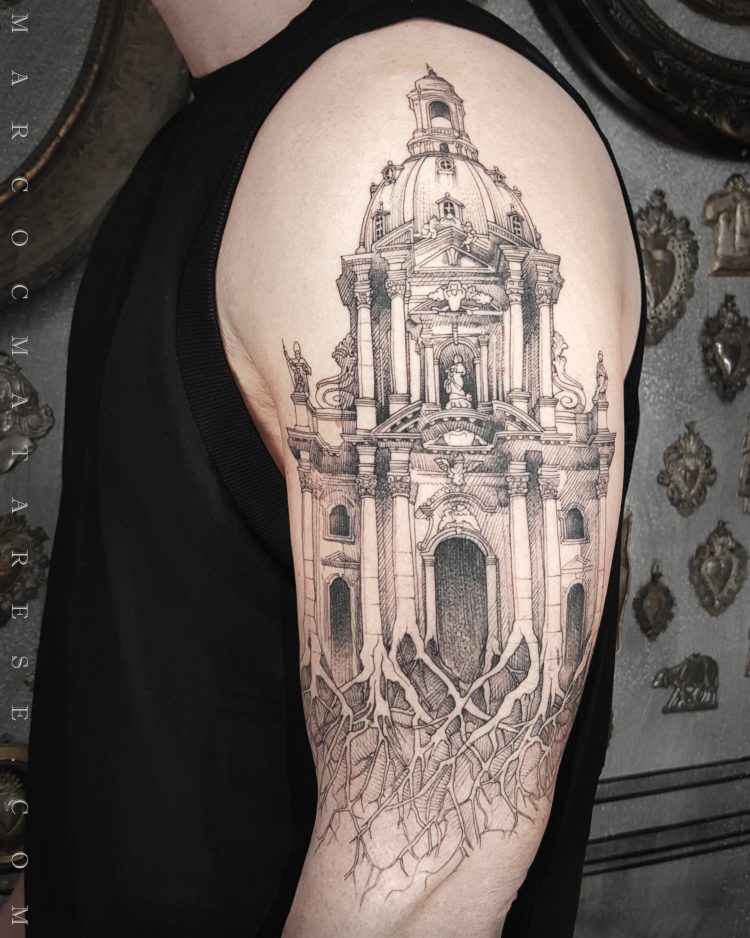
I also find your style extremely elegant. Which is quite curios, considering that tattoos have been labeled for decades as a quite trashy thing… yet more and more artists seem focused on drawing refined tattoos.
Well, I never really planned to be an ‘elegant tattooist.’ I discovered the tattoo art quite late, as I always worked painting frescos and stuff like that. But to be honest, what really persuaded me to walk this path was the discovery of this kind of possibility: I loved the idea of making smart, refined tattoos. So after a lifetime spent painting walls, I found out that my hand’s perfect dimension was elsewhere. But coming into the tattoo world very naïve ended up to be a good thing, somehow. I also started to appreciate many things that at the beginning I didn’t like, or styles I used to see as too easy and repetitive. Now I see them differently
How much does social media influence the tattoo trends, in your opinion?
Instagram helped me a lot. It was a great showcase that gave me a visibility I wouldn’t have even imagined I could reach. Tattoo artists in general owe a lot to this kind of social media. I think they’re very, very important nowadays, no matter how much tattooists may complain about them.
